I noted last week that Australia’s net overseas migration (NOM) appears to have peaked after hitting a record high 518,000 in the 2022-23 financial year.
This is in line with the federal government’s latest forecast of 375,000 NOM in 2023-24, which would still be the second-highest annual read on record:
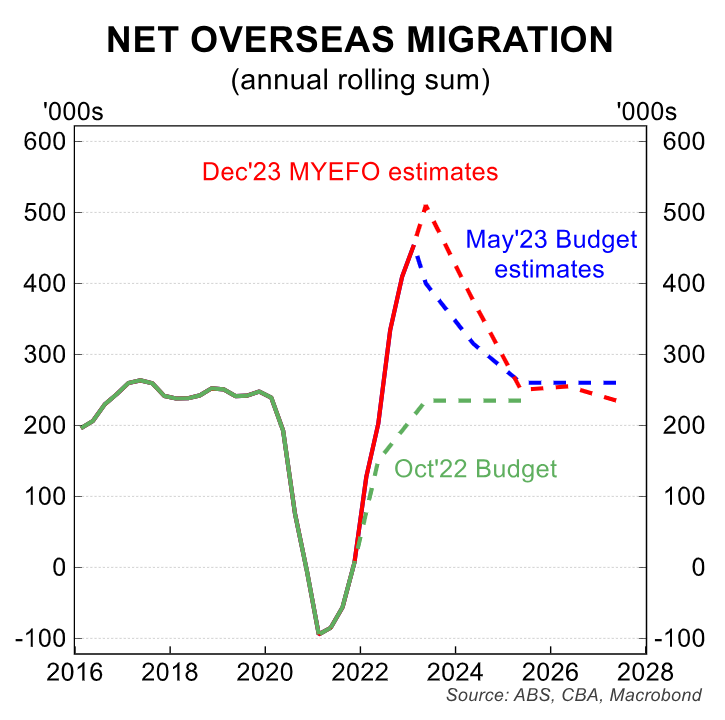
Indeed, the revised NOM forecasts outlined in December’s Mid-Year Economic and Fiscal Update (MYEFO) are cumulatively 458,000 higher than what was projected in Labor’s October 2022 federal budget.
They are also cumulatively 138,000 higher than was forecast in the May federal budget.
Belinda Allen, Senior Economist at CBA, has added further insight into the latest migration figures, noting that “net arrivals into Australia slowed at the tail end of 2023 and looked to have peaked in mid-2023”.
CBA also expects “this slowdown to continue in 2024, slowing the rate of population growth”:
“Using net overseas arrivals data for certain visa types till December 2023 suggest net overseas migration for 2023 was ~370k, roughly in line with government estimates for FY24″…
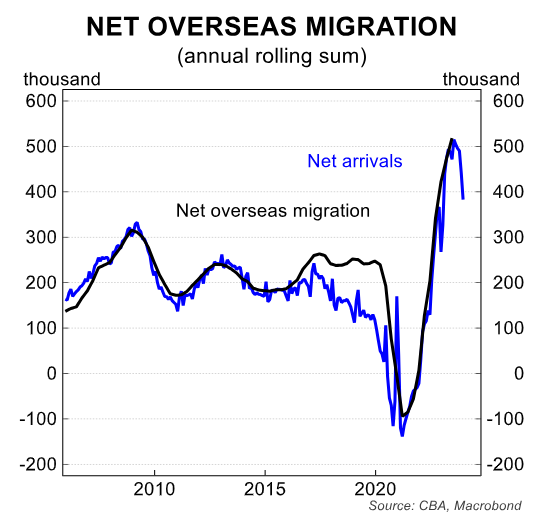
“Using a stable natural increase contribution would suggest Australia’s population growth could slow to 1.8%/yr in December 2023”.
“As the chart shows net arrivals have slowed for student visa holders in particular”.
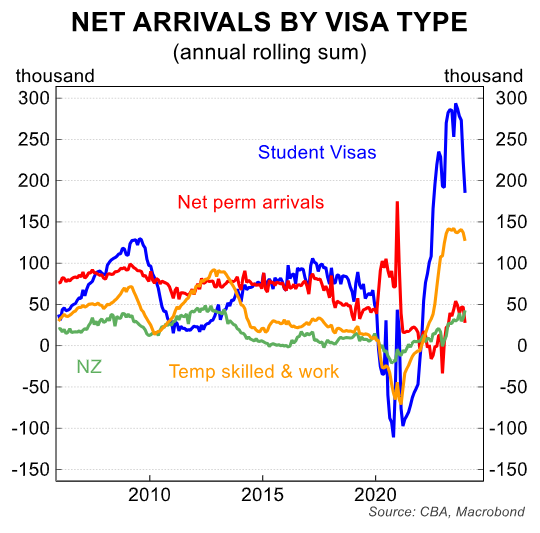
“This is likely driven by two drivers. First is the timing of inflows. After a surge in arrivals over the past two years, more students are finishing studies and departing Australia compared to the past two years. We had seen a breakdown in the normal arrival and departure flow for students since borders reopened in late 2022”.
“The second driver could be the beginning of an impact from a tightening in visa requirements by the Federal government as part of its review into the migration program. English language requirements are being lifted and approval rates for student visas have fallen”.
“Looking at other visa types and net permanent arrivals have fallen in recent months, as have temporary skilled and worker visa net arrivals”.
“As a result we expect that we are past peak population growth. This will impact the labour market as the working age population should grow at a slower rate”.
“As at December 2023 it was growing at 3.0%/yr. We expect this to soften and in our numbers expect the working age to grow by closer to 2% in 2024”.
Separate data from Justin Fabo at Antipodean Macro shows that “the flow of international students to Australia is slowing as evidenced by a decline in student visa grants”:
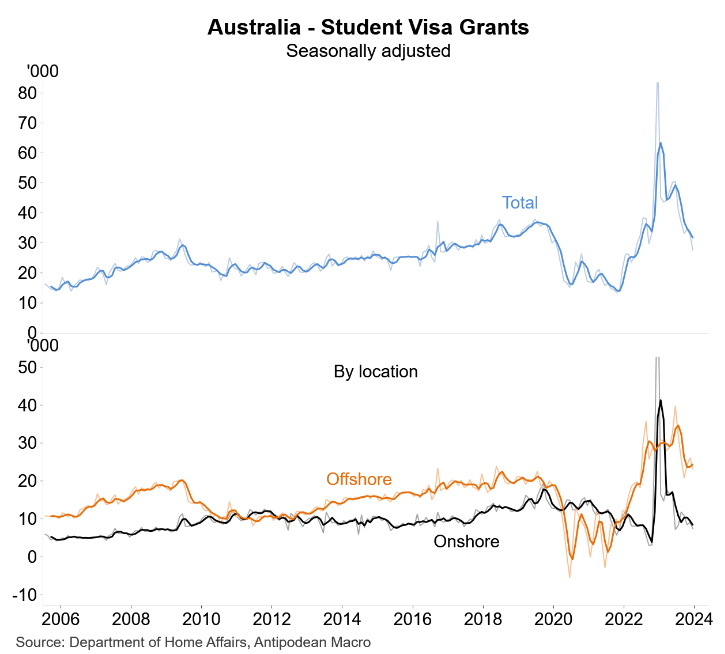
As noted last time, student visa arrivals have slowed whereas departures are catching up:
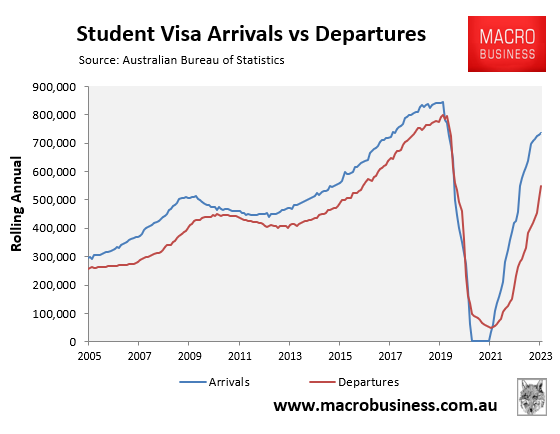
The lower anticipated NOM in 2024 should reduce pressure on the rental market; however, this will also depend on the extent to which housing construction falls alongside the moderation in immigration.

